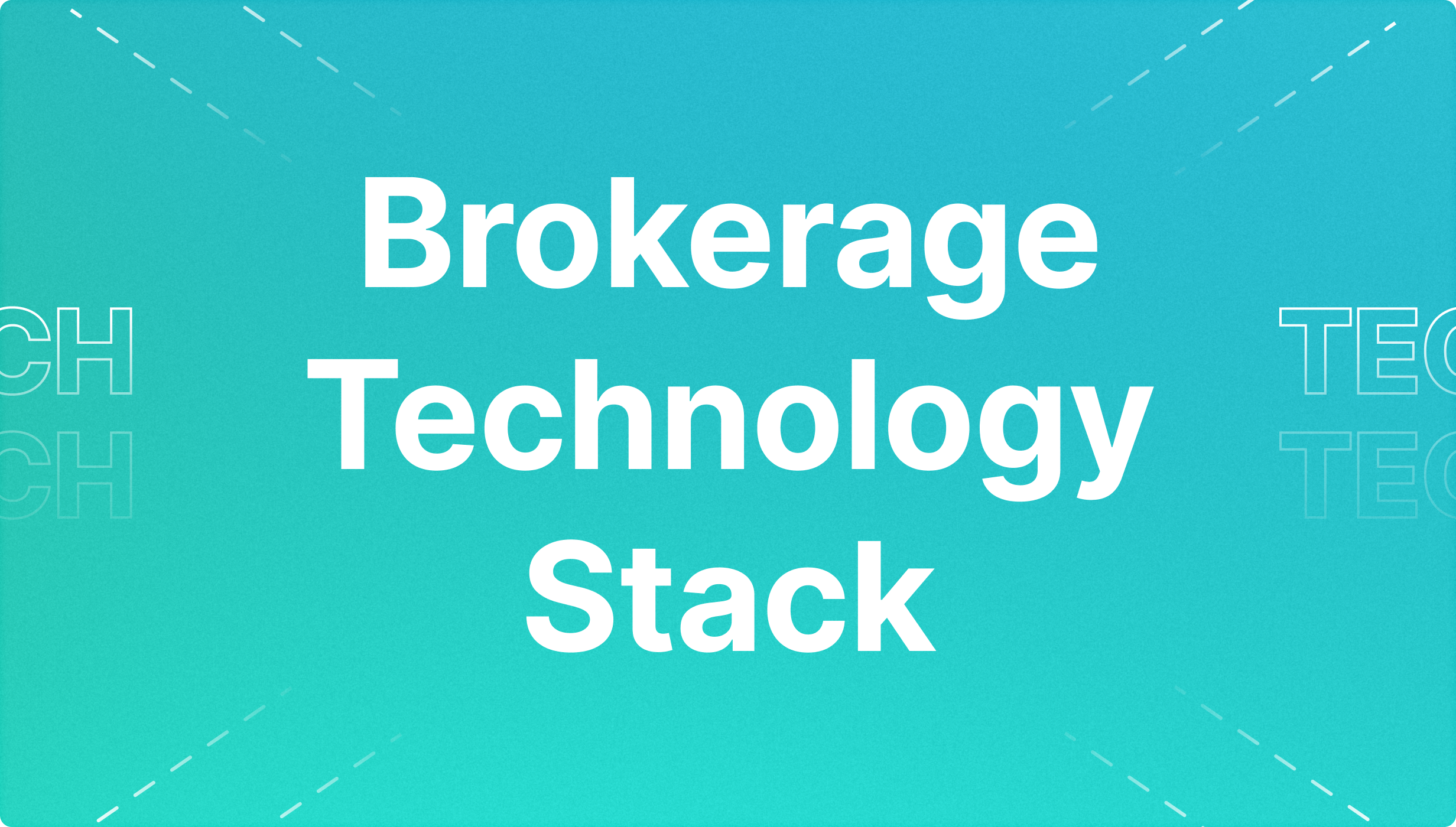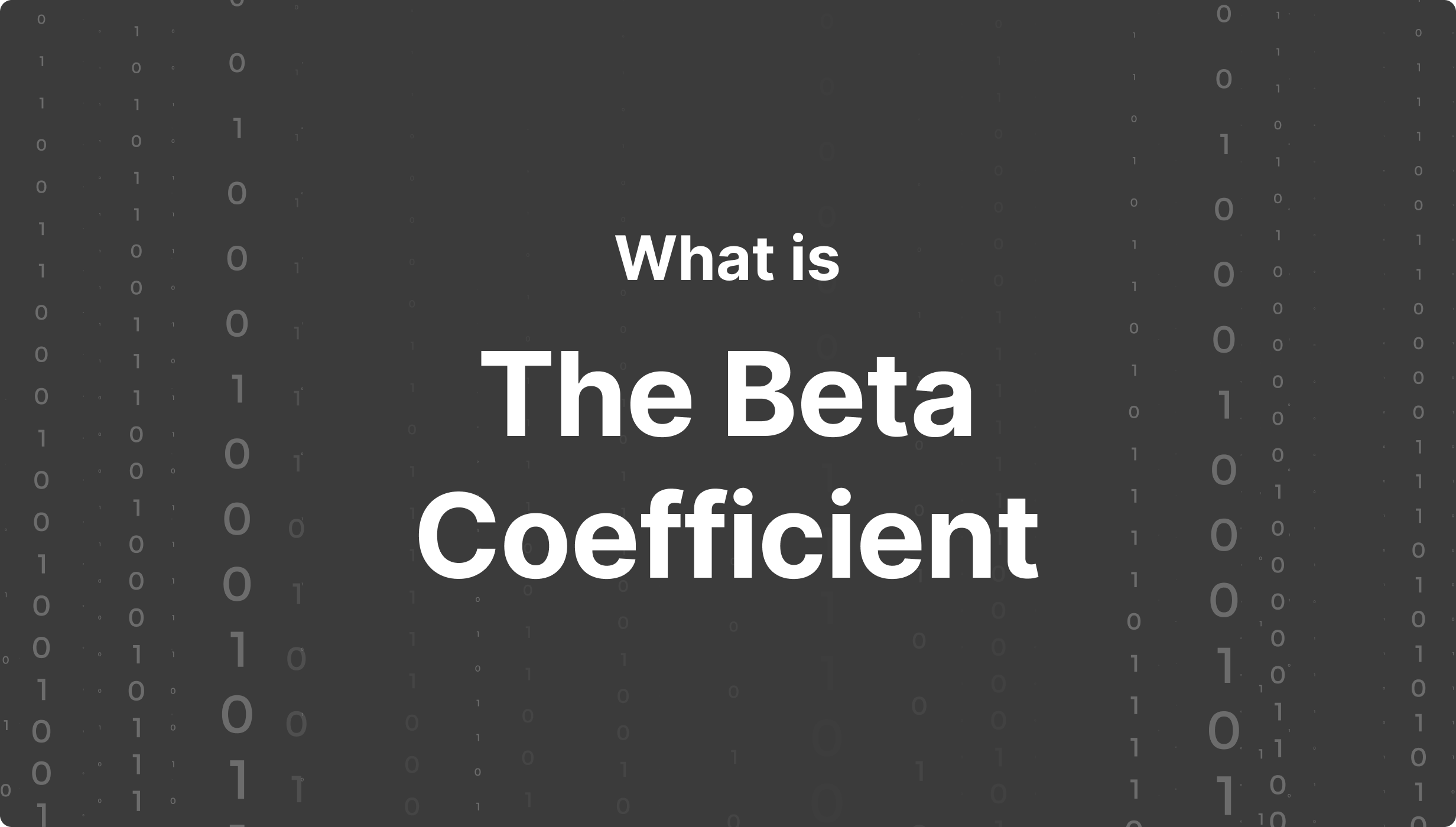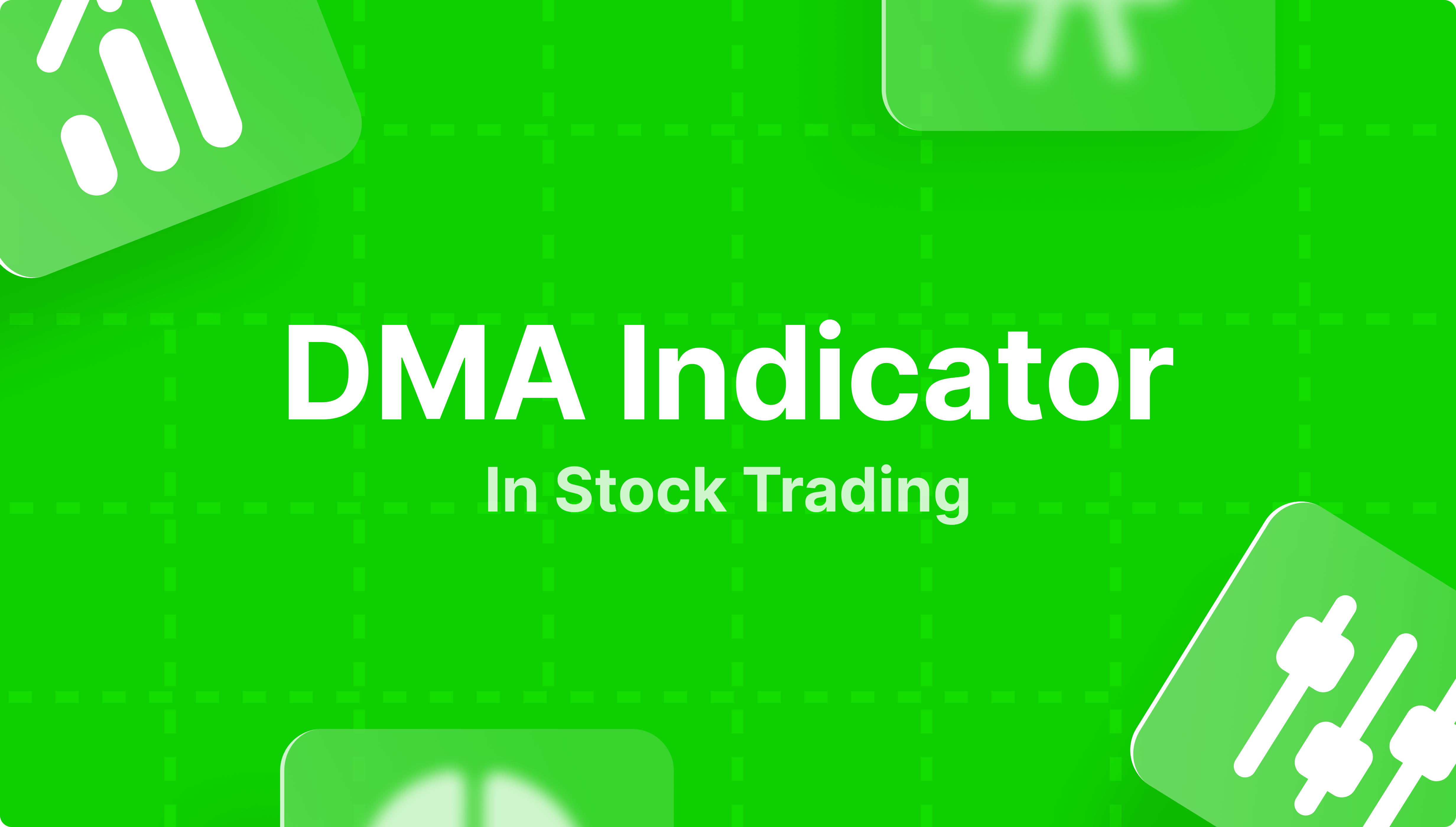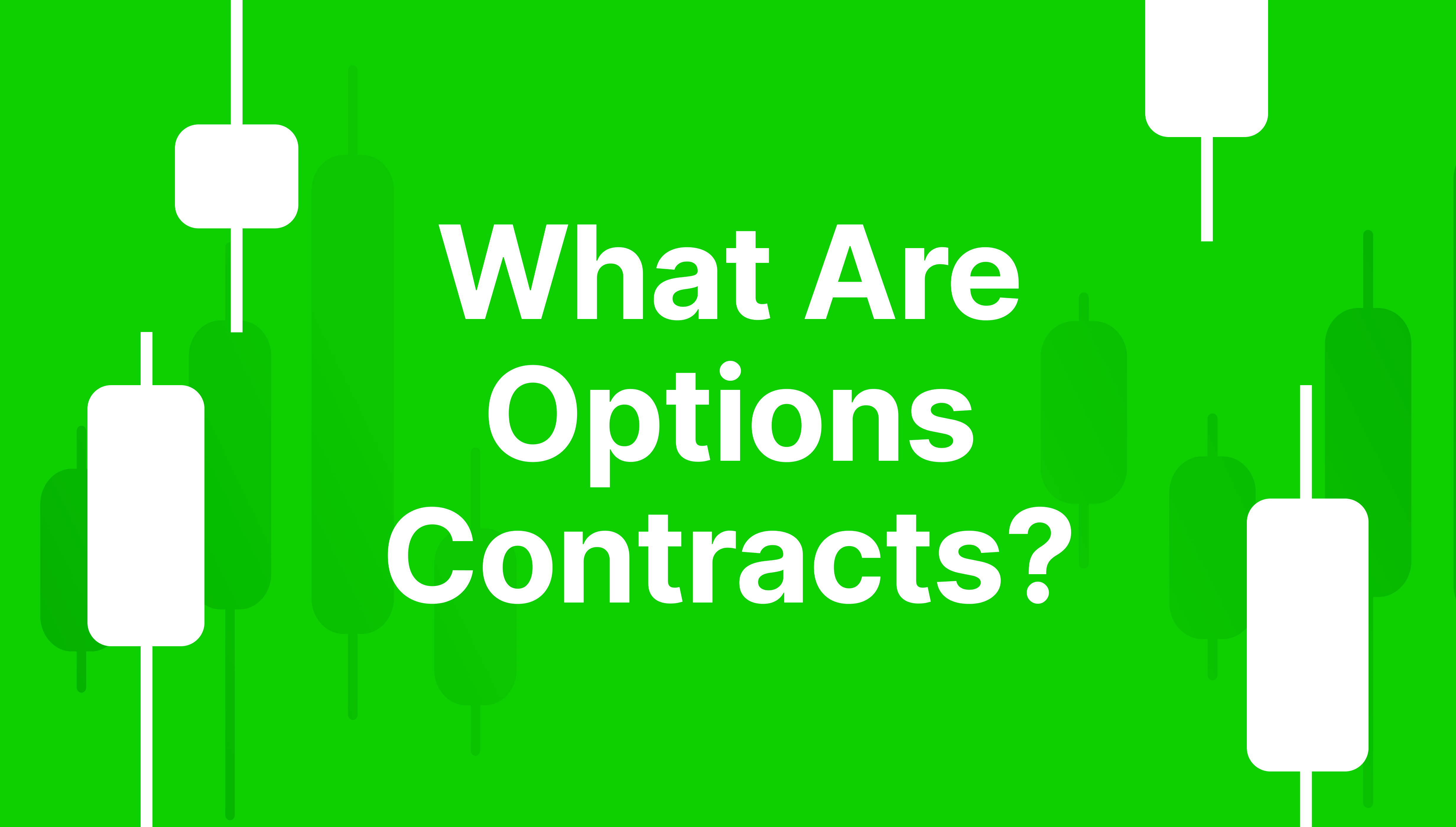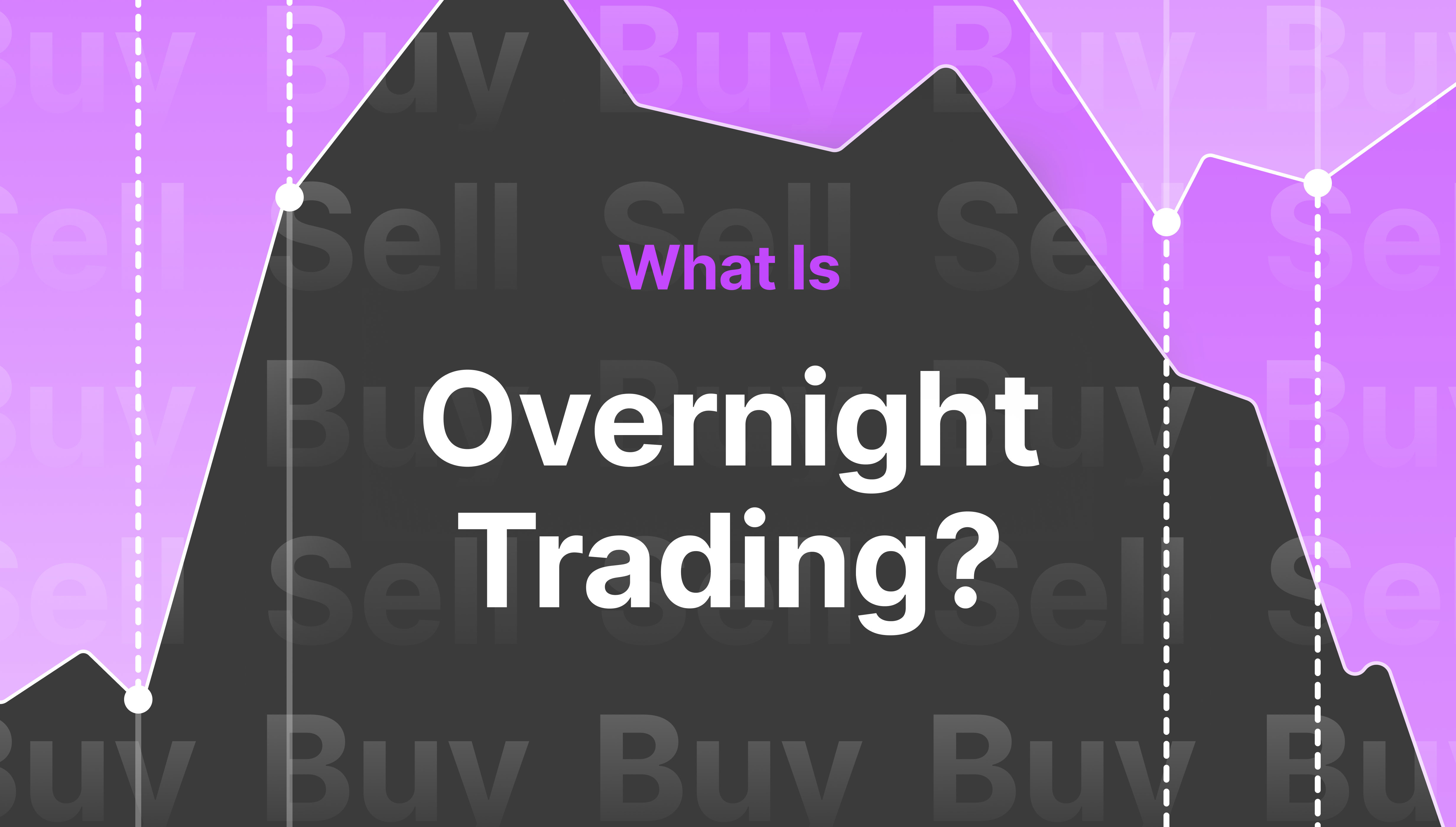How to Avoid Margin Call? — Trading Tips
Articles

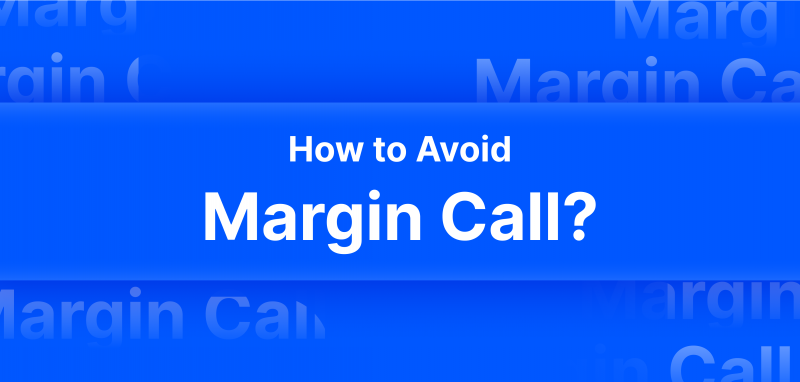
Today, margin trading is the subject of special attention from both individual and institutional investors, providing an opportunity to multiply the amount of initially invested capital many times over. However, despite all the advantages that margin trading provides, there are often situations when market participants make incorrect forecasts within their investment strategy, which lead to the emergence of the phenomenon called margin call and preceding liquidation of all open positions to avoid large financial losses.
This article will shed light on the question of what a margin call is and how it appears. You will also learn what actions should be taken to avoid a margin call and what to do if it does occur.
Key Takeaways
- Margin call is a form of notification of market participants about deficit of supporting margin and necessity to replenish the trading account.
- Margin call arises as a result of peculiarities of market trading conditions, specifics of investment decisions and conditions of brokerage services.
- Margin call can be avoided by having free cash, diversifying your investment portfolio, using stop loss and limit orders along with a proper understanding of the principles of leverage.
What is Margin Call in The Trading World?
Today, margin trading opens up incredible opportunities to implement the most daring investment strategies to obtain the highest possible profit within the framework of trading in any financial market and any class of financial instruments. The concept of margin trading has become widespread due to the emergence of great interest among market traders in the possibility of using the so-called leverage in order to multiply returns from market movements that are likely to meet expectations. However, despite this great advantage, margin trading is a risky game with sometimes unpredictable consequences that lead to liquidating open positions preceded by margin calls.
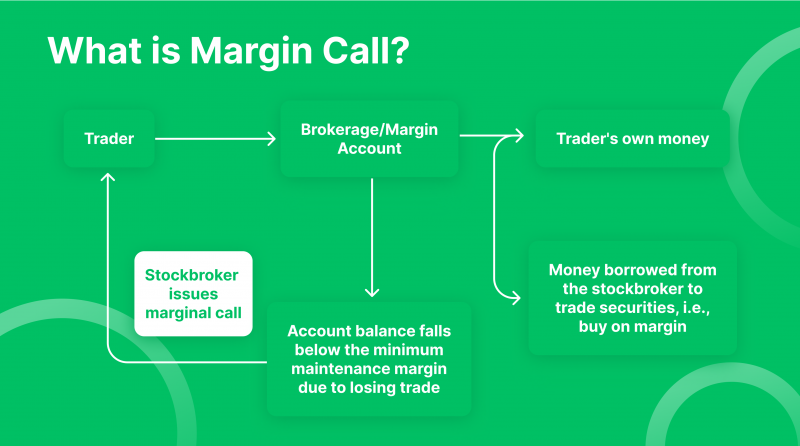
A margin call is a widespread and, at the same time, an unpleasant phenomenon arising as a result of the lack of free margin on the margin account of the investor to keep positions open, which disturbs the balance between equity and borrowed funds and leads to a critical situation in which the broker is forced to forcibly close part or all of the available trading transactions (orders) to restore this balance and avoid large losses as a result of the high volatility of the used for trading f the market. Such practice has a protective character and is very common among brokers because often a proportional increase of leverage can lead to huge losses, prevention of which helps to avoid the formation of margin debt to the broker.
Since initially margin trading did not have such a developed infrastructure as it does today, when a situation arose that required an investor to deposit additional funds into the trading account to cover unprofitable positions as part of speculative operations, there were no programs or services that could be used to receive prompt notifications about the status of open positions. Instead, there was a special department at the exchanges that made direct calls to investors to inform them that the margin balance was in deficit and there was a need to replenish the account to avoid forced liquidation. Hence, the name margin call.
Speaking of margin, it is also worth noting that the phenomenon of margin call is purely individual because depending on the type of financial market and the type of traded instrument, the terms of providing brokers with borrowed funds for trading to the investor can vary significantly. So in the case of Forex and crypto markets, the size of leverage can reach extremely high values, which sets its measures of free margin assessment and conditions for closing positions. In the case of the stock market, low volatility and low leverage set more lenient margin requirements for the conditions of margin operations.
Depending on the market, a margin call appears when the level of maintenance margin is less than 30% in relation to the level of free margin in the account.
What Triggers a Margin Call?
As mentioned above, a characteristic feature of margin trading is the use of leverage, thanks to which it is possible to increase the potential amount of profit (or loss) in proportion to the increase of this parameter, which, as a consequence, leads to an increase in the account value or its decrease depending on the dynamics of the market value of the traded asset, i.e., the degree of its volatility. This aspect is always taken into account in the process of investment activity, as its influence on it is also conditioned by a number of accompanying factors that cause the margin call. Among such factors, we can single out the following:
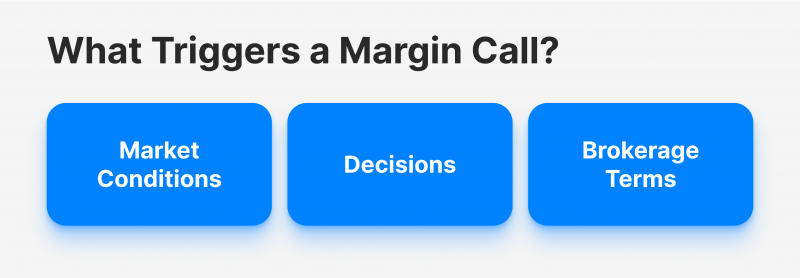
Market Conditions
Trading in any financial market is an unpredictable “roller coaster ride” that brings both incredibly large profits and substantial losses as a result of wrong actions. It follows that market conditions always determine the trading style of an investor or trader, and the profitability of transactions depends on it.
It is obvious that market behaviour is a decisive factor in determining the probability of margin calls when trading financial assets, especially those whose volatility level sets the limits for the possibility of implementing trading strategies used for short-term profits, such as scalping. In this case, it is necessary to be particularly careful to avoid the occurrence of liquidation of open positions, which is especially characteristic of assets with high trading volumes.
Decisions
This factor is secondary and arises from impulsive and often ill-considered actions within asset trading, especially common among new investors and traders. Inexperience and thirst for quick profits combined with the inability to make balanced investment decisions become serial mistakes, leading to the liquidation of open positions. In this case, a phenomenon arises in which erroneous actions in the process of trading lead to traders and investors leaving this business without having learned the basics of making money.
It is worth adding that today there are specialized services that provide professional services for managing investment activities when specialists can, for example, purchase securities or analyze the situation of a trader’s margin account, regulating the investment strategy in such a way that allows to exclude wrong decisions in margin trading and as a consequence, margin call and liquidation of transactions.
Brokerage Terms
Any broker may change the requirements and conditions for the use of margin instruments at any time on any grounds, which directly affects the ability to use leverage, and also affects the criteria for assessing the investor’s trading opportunities, including the level of margin loan he can use. If an investor has an open position and the broker changes the terms of margin services without notice, this may change the proportion between the free margin level and the margin required to maintain open positions, which may lead to margin calls and liquidation.
Actions to Take in the Event of a Margin Call
The unpredictability of market sentiment puts traders in a position where they have to consider many essential factors to profit safely from the smallest fluctuations in the price of financial instruments. The ability to masterfully utilize their volatility is inherent in many professional investors with extensive experience in the capital markets, but even they cannot be fully confident in their every next move and know exactly what will happen in the next moment.
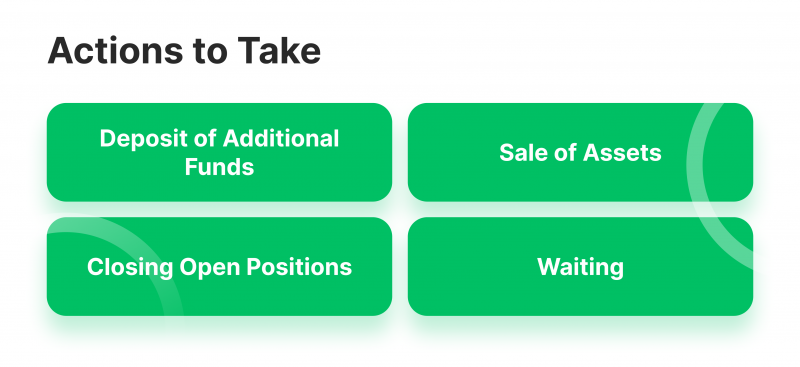
If an immeasurable decision is still made in the trading process that results in a margin call, there are several tactics to follow in this situation.
Deposit of Additional Funds
The first and the simplest solution in situations when there is a margin call is to replenish the investor’s margin account by any available amount to increase the proportion between the amount of borrowed funds (margin debt) and the amount of free cash (free margin), which will avoid further forced liquidation of open transactions on the market. This method is universal by nature, but it should be noted that its application is only possible if the investor has additional funds that could cover the requirements for the amount of collateral in margin transactions.
Sale of Assets
Quite often in the practice of trading in financial markets, in the event of a situation associated with a margin call, it is recommended to sell a part of the available assets on a trading account, which allows you to release an additional amount of funds that can be used to increase the level of the required free margin and, as a result, regulate the maintenance margin, the calculated value of which, when used in trading a particular financial asset, can vary significantly, and mainly depends on the degree of its volatility, where the stronger this indicator is, the higher the level of the required maintenance margin, which excludes the liquidation of existing open positions.
It should be noted that in most cases, investors and traders neglect this method of liquidation prevention because sometimes there is a contradictory situation in which an asset can be bought at a favourable price, but unfavourable market sentiment collapses its price to a level at which the investor can not sell due to the large loss of such a transaction. In this case, the voluntary sale of such assets leads to a decrease in his capital, which, however, is much more preferable than the loss of the entire volume of initially invested funds as a result of forced liquidation of open positions as a consequence of a wrongly chosen trading strategy.
Closing Open Positions
This tactic implies the voluntary closing of previously opened pending (limit) orders, the nature of which, in the framework of margin trading, implies reserving a part of the free margin on the investor’s trading account for the possibility of opening a deal at the price of interest when it is reached. In this case, any limit trades available for closing in any market, be it spot, margin or derivatives, are considered. This method is much safer than the one described above, as it does not involve selling existing assets at an unfavourable price to the investor.
Waiting
In case it is possible to do without selling the existing assets on the trading account, there is no possibility to deposit additional funds, and there are no open limit orders; it makes sense to rely on luck and expect that the direction of price movement of the traded asset will change to the necessary price, which will reduce the risk of margin call and as a consequence the forced liquidation of existing open trades. This method saves from hastily made incorrect trading conclusions in many market scenarios.
Main Ways and Tactics to Prevent and Avoid Margin Call
Now that you know what a margin call is and how it arises, as well as have an idea of what to do if a situation with a margin call occurs, forcing you to make sometimes difficult decisions, it is time to understand what actions should be taken to avoid this phenomenon and trade assets safely without fear of liquidation.
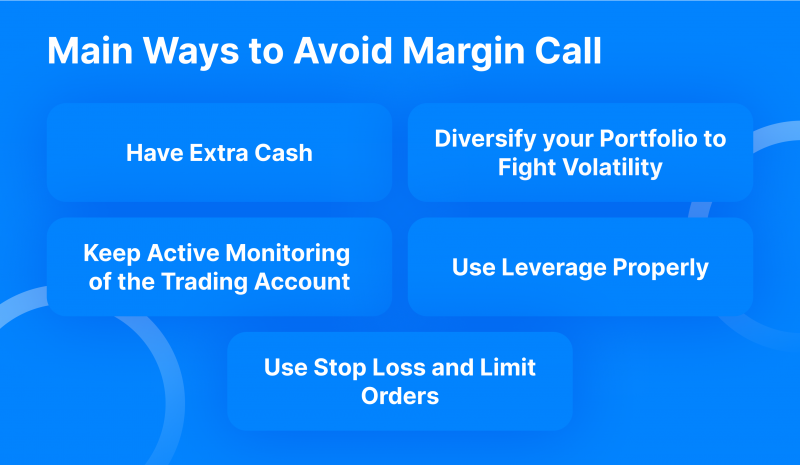
Have Extra Cash
This recommendation may seem trivial, but it is the most effective weapon in the fight against margin calls, as the availability of free cash on the account will help to use it when the need arises promptly.
It should be borne in mind that the process of calculating the ratio of margin used can strongly depend on the volatility of the market as a whole and not only for individual trading instruments, which implies the need to always have the amount of money in the amount sufficient to cover all margin needs because it is impossible to know how much money will be needed as a maintenance margin in each case.
Diversify Your Portfolio To Fight Volatility
The second no less effective way to avoid margin calls is the time-tested method of risk hedging – it is the usual diversification of investment portfolio, which involves the use of a strategy of investing in different classes and types of trading assets. Often it makes sense to pay attention not only to highly liquid assets, which in the framework of margin trading can bring substantial income, but also to low-liquid, stable instruments whose profitability will be much less, but will significantly protect against unforeseen losses, especially in those situations when there is no possibility to deposit cash or sell existing assets.
Keep Active Monitoring of the Trading Account
Simple monitoring of trading activity, and in particular, open trades, also helps to reduce the probability of margin call to some extent. Since margin trading in general has a higher level of risk than spot trading, it obliges to keep more careful records and analyze the state of the investment portfolio, which also includes the use of built-in analytical tools of the broker’s platform that help to have all the necessary information about open transactions, as well as to know the necessary parameters of the margin mode.
Use Leverage Properly
The importance of understanding the functioning of margin trading principles cannot be overemphasized, and the ability to use leverage correctly, despite its relative complexity, plays a crucial role in ensuring comfortable trading conditions, the key to which is a good balance between the level of risk and profit that the investor is willing to accept.
The size of leverage directly affects the degree of risk by regulating the level of account equity used to form the supporting margin for each of the open trades. Therefore, it is always worth using only the amount of leverage, which in relation to the amount of invested funds will avoid high losses in case of unfavorable developments in the trading of this or that asset.
Use Stop Loss and Limit Orders
The appearance of such essential tools as stop loss and limit orders in electronic trading has radically changed the view on the principles of risk management within the framework of margin trading. These orders are widely used as a powerful tool for regulating the risk level, preventing margin calls, and liquidation of positions.
In the first case, executing an order at a predetermined price slightly below the purchase price allows you to sell securities and stop increasing losses due to a sharp price movement. The second type of order helps to sell securities at a predetermined price in the range in which the approximate movement of the asset price is expected.
Conclusion
Margin in electronic trading is as frequent as high volatility of separate assets, but having in your arsenal valuable advice on its prevention, you can carry out investment activities with the use of leverage in any type of markets without fear of liquidation of open positions, which as a consequence will help to form the principles of competent planning of investment strategy.










